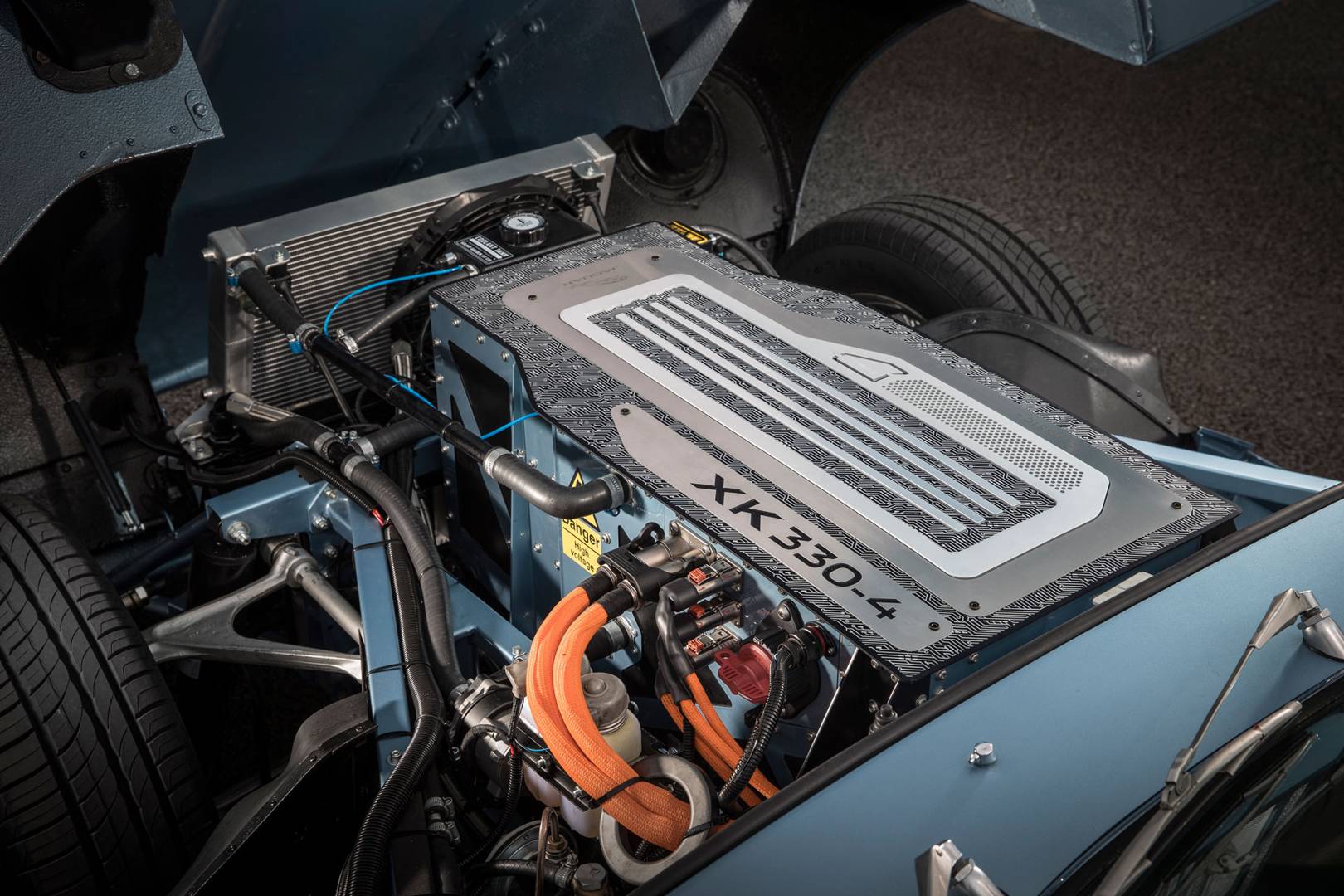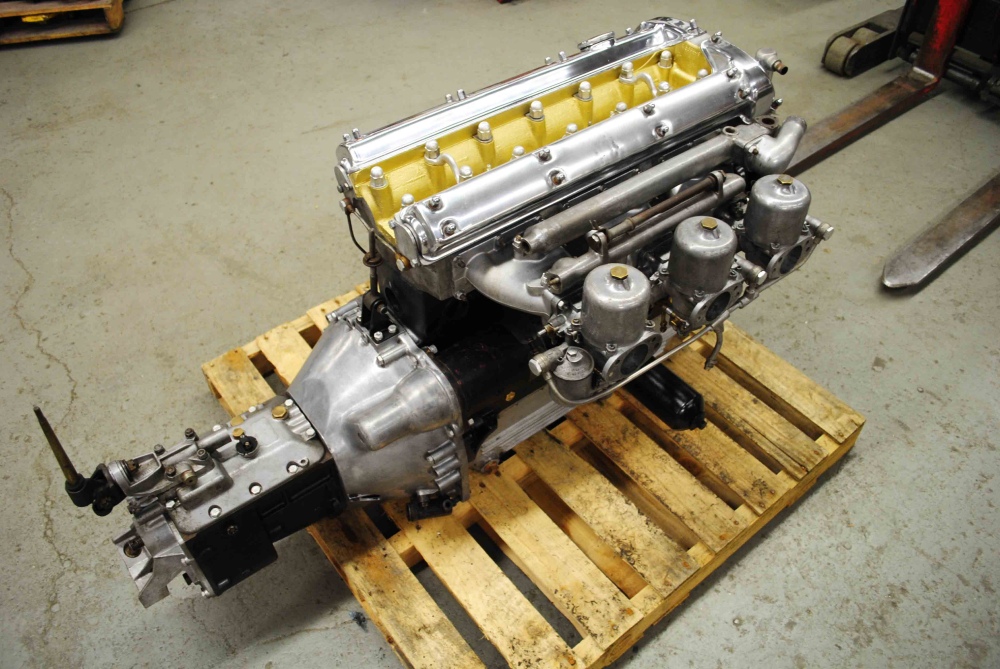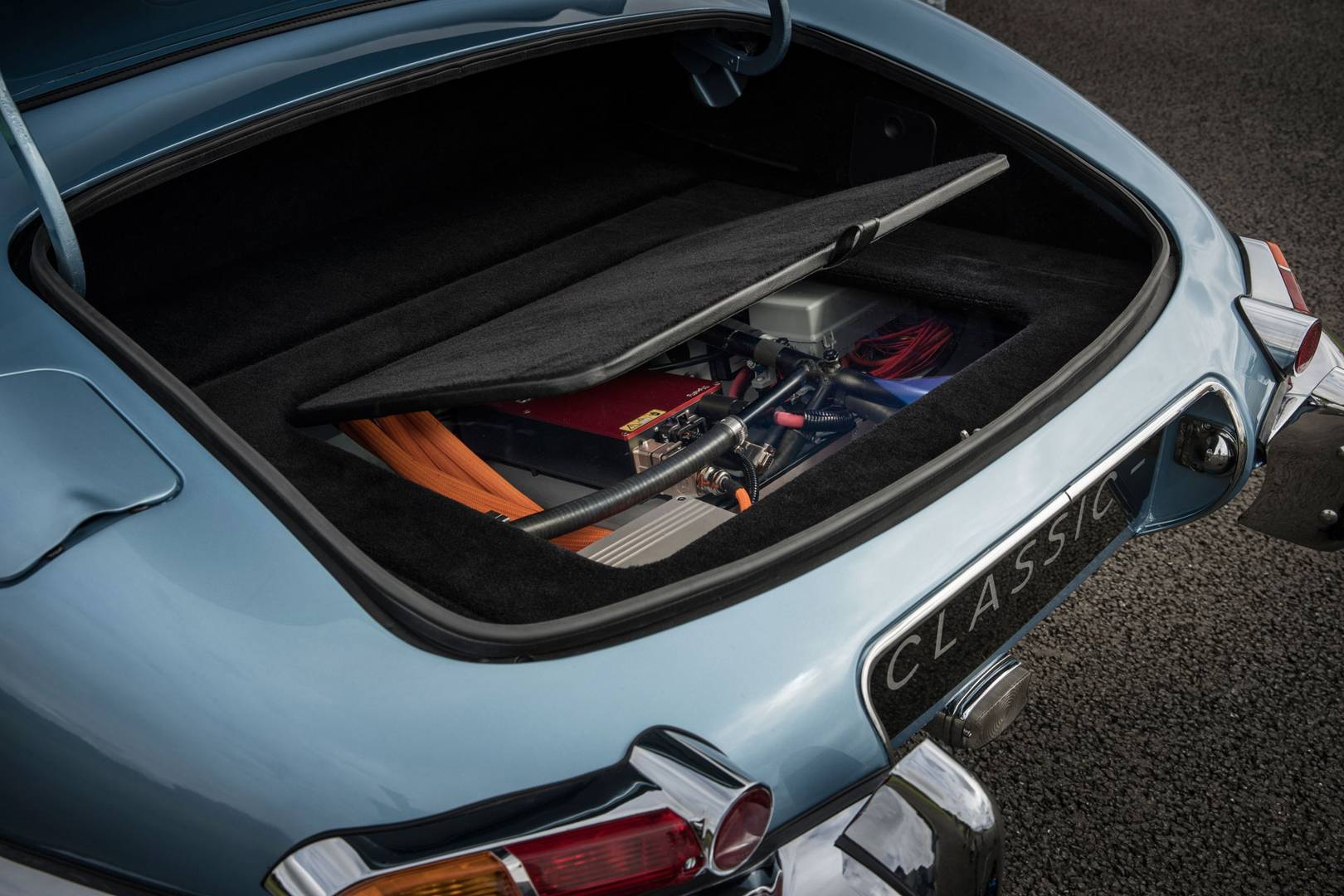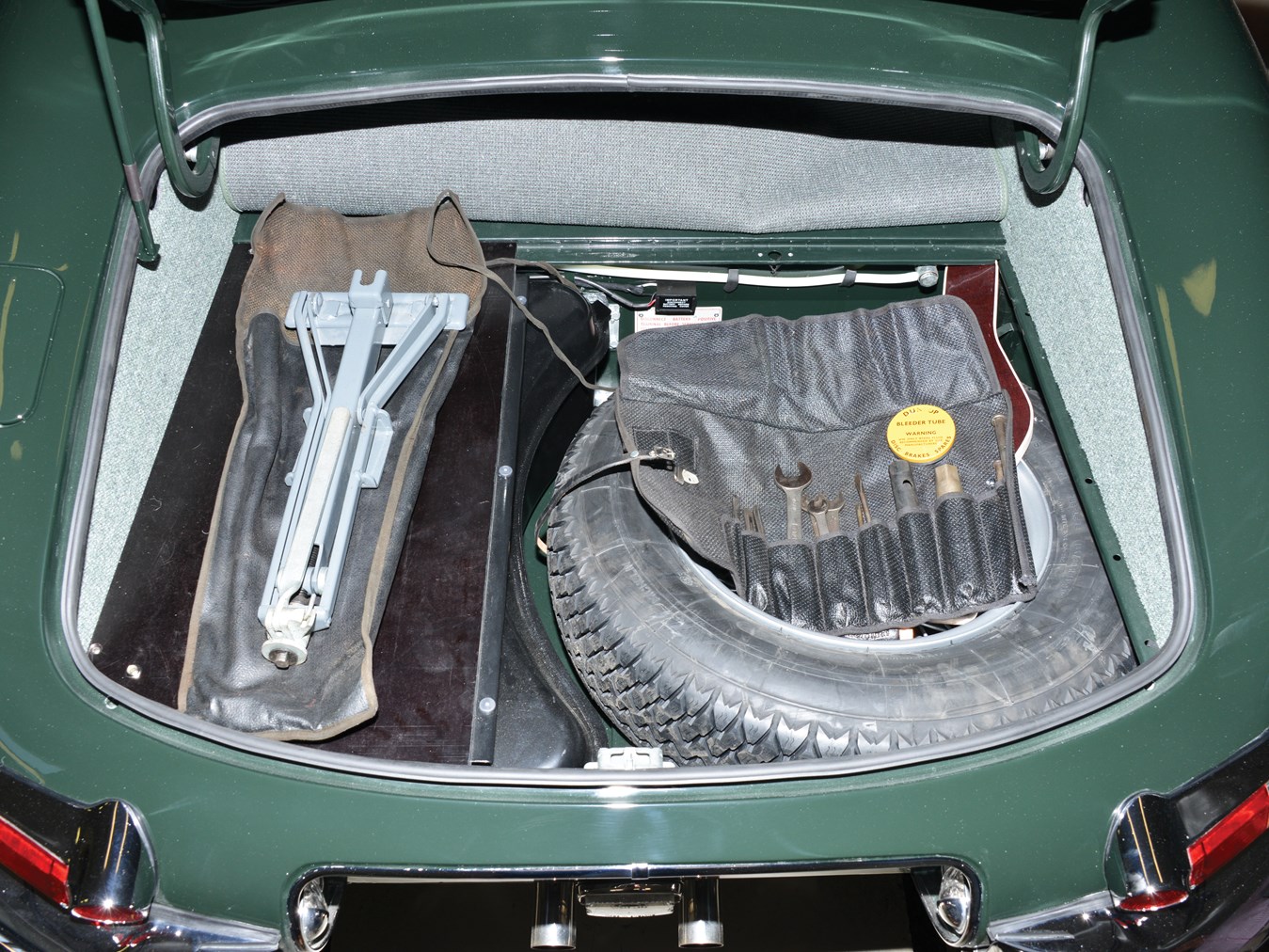We’d like to remind Forumites to please avoid political debate on the Forum.
This is to keep it a safe and useful space for MoneySaving discussions. Threads that are – or become – political in nature may be removed in line with the Forum’s rules. Thank you for your understanding.
The MSE Forum Team would like to wish you all a Merry Christmas. However, we know this time of year can be difficult for some. If you're struggling during the festive period, here's a list of organisations that might be able to help
📨 Have you signed up to the Forum's new Email Digest yet? Get a selection of trending threads sent straight to your inbox daily, weekly or monthly!
Has MSE helped you to save or reclaim money this year? Share your 2025 MoneySaving success stories!
Electric cars
Comments
-
HiMy only interest in the Royal Wedding....
I saw an interesting interview a while back which featured the E-type zero concept which made considerable sense ...
Apparently the concept's entire powertrain is fully compatible with the original engineering of the XK engine meaning that it would be possible to lift the ICE out of classic vehicles and replace it with a combined power&battery pack, leaving the original vehicle unchanged & retaining the ability to reverse the procedure and refit the original classic engine at a future date if required .... in the E-type the overall converted weight is said to be slightly lower than having the original ICE!
I find this to be really interesting as the entire drivetrain essentially remains unchanged and there's no real long-term impact to what could be pretty valuable classics, however, whilst everyone seems to be in awe of the concept E-type which has been making the rounds, Jaguar maintain that the procedure could just as easily apply to every XK powered vehicle built ... so they're talking about the majority of their cars made from the 1940's through to the 1990's! ...
My initial thoughts were that the range must be impacted to keep the weight down but that would be acceptable because most classic car owners don't do too many miles ... then I noticed that the range is supposed to be around 170miles ....
Taking the interchangeable powertrain approach and allowing for engineering retrofit obviously wouldn't suit all manufacturers and vehicle models, however, it really does raise questions and options for any vehicle with engine bays which were designed to accommodate large blocks of power ... I just wonder when you'll be able to drive to Ha1fords using petrol and return home in a fully functional EV ... :D
:D
Now that's what I call cool .... :cool:
HTH
Z"We are what we repeatedly do, excellence then is not an act, but a habit. " ...... Aristotle 0
0 -
What was the range likely to be on the ICE ones? I barely got 200 miles out of my more modern 2.5l X-Type.
I'd suspect that the E-Type is also going to be a lot lighter with a lot less to drain the battery, so you may get a better range from it than the same engine/battery in a modern car. I dare say there's some compromise regards fitting it, but I wouldn't say no.
Edit: The 4.2 is supposed to do 17mpg (official), which is probably closer to 10 in the real world? 14 gallon tank too means it'd only get somewhere between about 140 and 240 miles. So 170 on electric would fit pretty comfortably.0 -
That sounds relatively straightforward in a 60s car where the engine doesn't do much else but drive the wheels and engine bays tend to be have a lot of empty space.
In a modern car it can be hard to find the engine under the bonnet anong all the ancillary bits.0 -
Hmm. I'm sceptical.I saw an interesting interview a while back which featured the E-type zero concept which made considerable sense ...
Apparently the concept's entire powertrain is fully compatible with the original engineering of the XK engine meaning that it would be possible to lift the ICE out of classic vehicles and replace it with a combined power&battery pack, leaving the original vehicle unchanged & retaining the ability to reverse the procedure and refit the original classic engine at a future date if required .... in the E-type the overall converted weight is said to be slightly lower than having the original ICE!
I find this to be really interesting as the entire drivetrain essentially remains unchanged and there's no real long-term impact to what could be pretty valuable classics, however, whilst everyone seems to be in awe of the concept E-type which has been making the rounds, Jaguar maintain that the procedure could just as easily apply to every XK powered vehicle built ... so they're talking about the majority of their cars made from the 1940's through to the 1990's! ...
My initial thoughts were that the range must be impacted to keep the weight down but that would be acceptable because most classic car owners don't do too many miles ... then I noticed that the range is supposed to be around 170miles ....
The XK is a bloody hefty lump, sure - about 700lb, just over 300kg, complete with box. Jag quote 40kWh battery for the conversion - the estimate for a similar capacity battery in a Nissan Leaf is north of that weight alone, without the motor or electronics. And in the Leaf, that capacity gives just shy of 170 mile range (WLTP).
A vanilla E is only a couple of hundred kg lighter than a Leaf, and has aerodynamics from 60 years ago, albeit superb ones for the time.
I'm also sceptical about the "Oooh, it's just a straight swap..." line.
is about the only underbonnet shot I can find. That does not look to me like a battery pack.
This is what it's replacing...
Not a lot of space in the tunnel for battery, if the motor's in the engine bay.
So where is it?
Oh, hold on...
The boot floor position looks fairly unchanged, but this is what's normally underneath...
We can instantly see there ain't no full-size spare wheel under there any more, so what is? Well, we can have a bloody good guess at the answer to that...
And what's the refill time for each...?What was the range likely to be on the ICE ones? I barely got 200 miles out of my more modern 2.5l X-Type.0 -
Quoting from Jaguar:An electric powertrain developing 220kW has been specially designed for the E-type Concept Zero. Its lithium-ion battery pack has the same dimensions, and similar weight, to the XK six-cylinder engine used in the original E-type. It sits in precisely the same location as the XK engine. The electric motor (and reduction gear) lies just behind the battery pack, in the same location as the E-type!!!8217;s gearbox. A new propshaft sends power to a carry-over differential and final drive. Total weight is 80kg lower than the original E-type!!!8217;s.
Using an electric powertrain with similar weight and dimensions to the outgoing petrol engine and transmission means the car!!!8217;s structure, including suspension and brakes, has not changed, simplifying the conversion and homologation. It drives, handles, rides and brakes like an original E-type. Front-rear weight distribution is unchanged.0 -
Martyn1981 wrote: »Yep, plus those ownership cost studies seem to show that hybrids cost more to run than an ICE, whereas BEV's are cheaper, so hybrid's having the best of both worlds also means that they have the worst too due to the extra complications.
It's hardly surprising they are more expensive to run.
There is the extra capital cost, and therefore depreciation, of having two power sources. Then the worse efficiency of having extra weight.
By the way, this may be exacerbated if politicians continue to insist on future hybrids having greater plug-in electric range, thus larger batteries, more weight, higher cost ...
Digressing further, they might think this is clever, after a similar decision of ordering dual mode trains as a measure to chicken out of the capital cost of more electrification, and Chris Grayling arranging to have the cost benefit analysis figures slanted, to serve as justification.
Back to subject, after a couple of recent articles about the BMW i3, including news of a police force buying some, I worked out that for the extended range version, which has an small petrol engine which runs as a generator to charge the battery, if someone uses the petrol mode 10% of the time then fuel costs per mile would double. Still trivial compared to 50 p or £1 or more per mile depreciation though.0 -
HiQuoting from Jaguar:An electric powertrain developing 220kW has been specially designed for the E-type Concept Zero. Its lithium-ion battery pack has the same dimensions, and similar weight, to the XK six-cylinder engine used in the original E-type. It sits in precisely the same location as the XK engine. The electric motor (and reduction gear) lies just behind the battery pack, in the same location as the E-type!!!8217;s gearbox. A new propshaft sends power to a carry-over differential and final drive. Total weight is 80kg lower than the original E-type!!!8217;s.
Using an electric powertrain with similar weight and dimensions to the outgoing petrol engine and transmission means the car!!!8217;s structure, including suspension and brakes, has not changed, simplifying the conversion and homologation. It drives, handles, rides and brakes like an original E-type. Front-rear weight distribution is unchanged.
Thanks for the backup information ... just shows that some post erroneously for effect to support some form of ideology rather than for information ....
... anyway, having established that the XK engine is replaced by the batteries and that the gearbox with the electric motor, leaving the rest of the drivetrain almost as is, then the solution looks sound to me ... MrsZ drove a SII FHC for quite a while & at times we wish we still had it ... then again there's the white (alas LHD US import!) series 1.5 FHC and the sable SIII 2+2 (but they weren't around for long!) ... ahhh, also the early red SI & late V12 roadster that we borrowed for a while .... yes, I believe that Jaguar have shown a concept that not only can work, but has been proven to do so ... it's just a shame that the EV naysayers (whether having vested interests or not) just attempt to play Canute as the tide rolls in ....
... more anyway ... the spare-wheel well as shown in AdrianC's pictures looks to contain electronics as opposed to a power-pack ... if there's a need for additional battery capacity at the rear of the vehicle I'm pretty sure that a solution involving replacing the (unnecessary weight) fuel tank could be engineered without changing the mounting points/method ..
Am I the only one that now laughs at the standard of the anti-EV posting on this thread ... if it's not possible or can't be done or isn't happening - what is it that we can see on the road more&more every day??
HTH
Z"We are what we repeatedly do, excellence then is not an act, but a habit. " ...... Aristotle 0
0 -
Hi.... of having two power sources. Then the worse efficiency of having extra weight.
Technical & logical question ...
If a standard hybrid vehicle (say an Auris or Prius) is less efficient than a pure ICE vehicle and this is due to the additional weight of the batteries, electric motor etc ... would the proof not be in the relative MPG when compared to similar sized vehicles or even the same vehicle range with an alternative non-hybrid powertrain burning the same fuel type?
... shouldn't the recovery of kinetic energy to a storage medium be considered as an efficiency measure which trumps the energy burden of accelerating the additional weight? ... if so, what is the overall effect on efficiency?
HTH
Z"We are what we repeatedly do, excellence then is not an act, but a habit. " ...... Aristotle 0
0 -
Hi
Technical & logical question ...
If a standard hybrid vehicle (say an Auris or Prius) is less efficient than a pure ICE vehicle and this is due to the additional weight of the batteries, electric motor etc ... would the proof not be in the relative MPG when compared to similar sized vehicles or even the same vehicle range with an alternative non-hybrid powertrain burning the same fuel type?
... shouldn't the recovery of kinetic energy to a storage medium be considered as an efficiency measure which trumps the energy burden of accelerating the additional weight? ... if so, what is the overall effect on efficiency?
HTH
Z
Your quote omits the rest of what I said, but I'll expand a bit.
The earliest hybrids such as the Honda Insight and the Prius are, as you hint, about increasing efficiency by temporarily storing a modest amount of energy.
Even so, they are making a petrol about similar to a diesel in mpg and speed, rather than surpassing it, but let's treat that as digression.
Then people hatched the idea of plug-in charging, and more electric power. This needs a larger battery as the electric only range of the above cars is quite modest.
Compare the weight of the mk 1 Insight, about 850 kg, with a Volvo V60 diesel plus electric plug-in hybrid, about 1800 kg, and you might start to get a hint of what I'm driving at.
Some manufacturers are producing devices with nearly 200 + 100 bhp, and the weight is heading to between 1.5 and 2 tons, which is bloated in both power and weight and surpasses what most of us modestly need to see from an ordinary car.
Now governments, or ours at least, are thinking that maybe hybrid cars should all have greater electric range, which might eventually mean they want to sanction the lean mean pioneers.
From an original position of scepticism about the Prius, as I don't think it can surpass my older diesel for range and average speed on a longer trip, and might beat it only by 10 or 20 per cent on fuel for shorter trips, I'm coming around to it, partly as I saw one for sale a few weeks ago with 200,000 miles and an LPG conversion, both of which hint at running one for ages at lower per mile costs.
So I'll except the Prius from my comments about more expensive to run, if it can last that long. I'm thinking more of the later hybrids which are overpowered and overweight. The BMW i3 is more like a direction I like, lighter, petrol only as a confidence building backup, but unfortunately still expensive to start with (though Hampshire Police are convinced they can save on running them from new)
With any of these considerations, the cheapness per mile of electricity is a bit of a distortion, as so far it's largely based on tax exemption (how much would a diesel cost per mile on duty free fuel?), and depreciation is usually a much larger amount per mile to begin with.
Run a car for 100,000 to 200,000 miles though, and depreciation shrinks to under 2p a mile on mine from when I bought it.
Personally, now there are some 5 year old electric cars at interesting prices, it's worth some research about expected battery life, maybe a C Zero for local trips and keep the Xantia for longer stuff. That seems far more likely for me than ever going for a Volvo V60 plug-in hybrid. Maybe such overall usage could at a stretch be called hybridised, but by using 2 cars.0 -
So I'll except the Prius from my comments about more expensive to run, if it can last that long. I'm thinking more of the later hybrids which are overpowered and overweight. The BMW i3 is more like a direction I like, lighter, petrol only as a confidence building backup, but unfortunately still expensive to start with (though Hampshire Police are convinced they can save on running them from new)
I think I'm with you. The early efficiency based hybrids did a great job of offering an alternative to diesels, but more importantly they proved the kit (motors and batts) which IMO probably helped greatly with consumer confidence in BEV's. And the plug-in Prius really got me thinking about what could be achieved by many whose trip to work and back could be covered by the range.
I was rather disappointed to see the rollout of huge SUV's with mild hybridization, and vast price tags. That looked more like greenwash and corporate fuel average manipulation.
I suspect hybrids will be an evolutionary dead end (apart from some range extender models for margin cases) but have been an essential part of the BEV story.Mart. Cardiff. 8.72 kWp PV systems (2.12 SSW 4.6 ESE & 2.0 WNW). 28kWh battery storage. Two A2A units for cleaner heating. Two BEV's for cleaner driving.
For general PV advice please see the PV FAQ thread on the Green & Ethical Board.0
Confirm your email address to Create Threads and Reply

Categories
- All Categories
- 352.9K Banking & Borrowing
- 253.9K Reduce Debt & Boost Income
- 454.7K Spending & Discounts
- 246K Work, Benefits & Business
- 602.1K Mortgages, Homes & Bills
- 177.8K Life & Family
- 259.9K Travel & Transport
- 1.5M Hobbies & Leisure
- 16K Discuss & Feedback
- 37.7K Read-Only Boards





